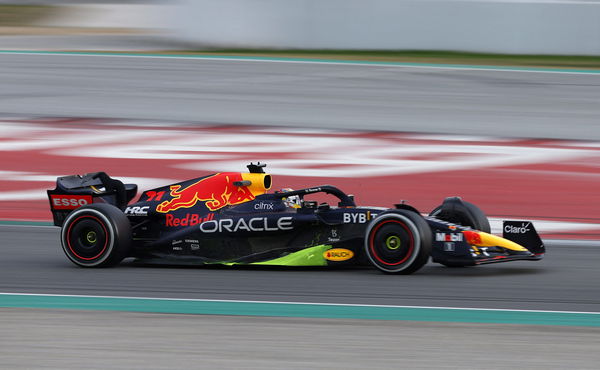
Reuters
Formula One F1 – Pre-Season Testing – Circuit de Barcelona-Catalunya, Barcelona, Spain – February 23, 2022 Alfa Romeo’s Valtteri Bottas during testing REUTERS/Albert Gea

Reuters
Formula One F1 – Pre-Season Testing – Circuit de Barcelona-Catalunya, Barcelona, Spain – February 23, 2022 Alfa Romeo’s Valtteri Bottas during testing REUTERS/Albert Gea
Formula 1 is entering a new era with a major overhaul in rules, arguably the biggest one since 1983. The new-generation cars are fundamentally different from their predecessors. FIA has introduced these changes with an aim to achieve a fair and more competitive F1 grid. As a key difference, the upcoming car design will have simplified top-body aerodynamics and a more neutral front wing to tackle the dirty air.
Watch What’s Trending Now!
ADVERTISEMENT
Furthermore, the 2022 chassis will come with 18-inch Pirelli rubbers. These will be less temperature-sensitive tires, with the addition of over-wheel winglets. These additions, among others, will push the overall weight of the 2022 F1 car up by 5%. Now, the cars need to weigh a minimum of 795 kg excluding fuel, which is an increase of around 43 kg since 2021. This is the highest year-on-year weight rise since the start of the turbo-hybrid era in 2014.

Reuters
Formula One F1 – Pre-Season Testing – Circuit de Barcelona-Catalunya, Barcelona, Spain – February 24, 2022 Red Bull’s Sergio Perez during testing REUTERS/Albert Gea
Now, one important fact is that every extra pound slows the car to some extent. Racing at the Barcelona circuit, for every 10 kg of increase in car weight, teams can lose up to three-tenths of the second performance. As per reports, 9 out of the 10 teams are currently well over the minimum weight of 795 kg, some even in double digits, Alfa Romeo being the exception.
ADVERTISEMENT
F1 teams are pushing to raise the minimum weight so that no players have a competitive advantage over others.
ADVERTISEMENT
F1 teams are pushing to raise the minimum weight of 2022 cars
As per recent reports, 8 of the 10 teams are well over the minimum weight limit of 795 kg. McLaren is close to the prescribed limit while Alfa Romeo is on point. Some teams have even surpassed the limit by double digits. The new-generation cars were originally supposed to weigh 775 kg, the number added 20 kg over time, taking it to the current limit. Raising it any further might be a headache for the FIA, especially with three weeks to go before the season starts.
Red Bull advisor Helmut Marko also laid down his reaction to this fluctuating issue. “First it was said that the weight was going up, then there was a turnaround,” remarked Marko as reported by Auto Motor und Sport. (Quote translated by Google Translate)
ADVERTISEMENT

Reuters
Formula One F1 – Pre-Season Testing – Circuit de Barcelona-Catalunya, Barcelona, Spain – February 25, 2022 Mercedes’ Lewis Hamilton during testing REUTERS/Albert Gea
As it stands, the teams might have to work their way through this using lighter components. However, its viability is surely under lens because we are standing at the doorstep of the next season. Teams will regroup again in two weeks’ time for the final round of testing ahead of the inaugural GP. Tell us what you think of this issue in the comments below.
Top Stories
Adrian Newey’s Motorsport Masterpiece: RB17 vs Aston Martin Valkyrie, Which One Is Better?

Who Is Oscar Piastri’s Father, Chris Piastri? Co-Founder of Multibillion Dollar Automotive Company

3 Years After His Death, Niki Lauda’s Wife Brutally Disrespects Him to Initiate $32,000,000 Battle Against Own Children

Who is Oliver Bearman’s father, David Bearman? – Founder & CEO of Multimillion Dollar Company

Who Is Canadian F1 Billionaire Lawrence Stroll’s Daughter & Heiress Chloe Stroll?

Read More: Honda Continues F1 Legacy Through AlphaTauri Despite 2021 Exit
ADVERTISEMENT
ADVERTISEMENT
ADVERTISEMENT
ADVERTISEMENT

